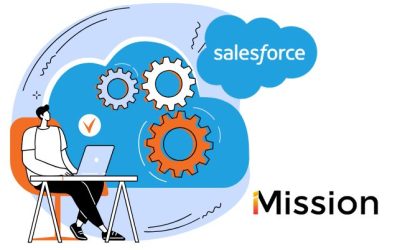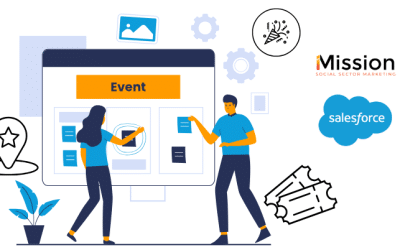Public relations has always been a powerful marketing strategy for nonprofit organizations. Lacking marketing resources used by businesses, nonprofits discovered that a public relations campaign offered a low-cost way to get their message heard in more traditional media outlets like radio, T.V. and newspapers. Public relations raises awareness, and because the message is delivered by a trusted news source, the nonprofit is also trusted and their message believed.
On social media, influencer marketing is really digital public relations. It is a lower-cost way to get your nonprofit’s message heard by a broader audience. It raises awareness about the causes and those it serves. It builds trust and credibility for your nonprofit.

Who Are Social Media Influencers?
Social media has created a place where individuals appealing to all sorts of interests can speak directly to large audiences.
Sure, influencers existed before the internet. Celebrities, sport heros, elected officials and others commanded our attention. They appeared in all manners of media, from mainstream to tabloid. The internet offered two innovations. Influencers who built their reputations offline can now speak directly and at no cost to their fans. They can use tweets, livestreaming on Facebook, YouTube and TikTok, stories on Instagram or self-published, longer articles on Linkedin.
The internet has also created a new class of celebrities – people who built their influence and celebrity status on one or more of the social media channels. Today, these influencers have the power to build brands, sell products and services, and for nonprofits, fundraise.
Online influencers are now classified as Top-Tier Influencers, Middle-Tier Influencers, Micro-Influencers, and Superfans.
Top-Tier Influencers
Top-Tier Influencers have the largest audience, typically between 100,000 – 1,000,000. They’re usually recognizable figures with highly engaged followers. Top-Tier Influencers work with larger brands and at the higher end of the pay scale.
Middle-Tier Influencers
Middle-Tier Influencers usually fall between 20,000 – 100,000 followers and are not as well-established as Top-Tier Influencers. These influencers are still working on building their brands and audiences and may be more flexible with fees or the form a partnership takes.
Micro-Influencers
Micro-influencers typically have around 10,000 followers, though they focus on niche areas, and their audiences are usually heavily engaged. Micro-influencers can seem more relatable to audiences than Top or Middle-Tier Influencers, and they may also be more accessible to nonprofit outreach. Micro-influencers are also often more deeply engaged with, and trusted by, their followers than those with larger followings.
Superfans
These are the people already in your own networks and engaging with you on your social media channels. Superfans already like and share your content. They’re also likely to be some of the easiest people for you to reach out to by trading ideas, sharing specific content with them, and tapping into their own social networks.
Why Connect With Social Media Influencers?
Like news stories in traditional media, influencer marketing for nonprofits does a number of things:
- Offers Exposure: Influencer content is a PR tactic in the digital space that can amplify your message. Influencers can potentially reach large numbers of people who care about your mission, giving you a lot of impressions in a space you may not have been able to access effectively yet.
- Builds Credibility, Brand and Trust: Influencers inspire a high level of trust in their followers because they’ve established themselves as being deeply invested in, and knowledgeable about, a niche area. Audiences are flooded with choice in terms of who to follow, donate to, and interact with both in-person and online. When you partner with influencers who share your content, their support confers credibility on your organization and signals to their followers that you’re a worthwhile actor in their space.
- Connects to Target Audiences: In addition to exposure to more people through the amplification of your message that influencers can offer, partnering with influencers can help you reach people who care the most about your cause. Influencers already have powerful voices in the digital spaces and communities that some of your potentially most ardent supporters frequent. When influencers share your content and messages, they make crucial introductions to these high-value audiences that could end up paying off in terms of finding, and keeping, long-term supporters.
Getting Organized For Nonprofit Influencer Marketing
Before reaching out to influencers, form a plan that will give you the best shot at both bringing them on board and making a longer-term partnership successful.
First, think about what you want to accomplish with potential influencer partnerships. Is your main goal to build awareness? Recruit volunteers? Grow your social media audience? Get event attendance? Inspire people to give?
Setting clear goals and objectives before reaching out to influencers will help give you a better picture of which influencers are the best fit. Work with your team to decide on the best way to manage and track your goals once you do enter influencer partnerships so you can accurately assess your progress and adjust your approach if necessary. Define your goal in concrete terms.
Finding The Right Influencers
Next, start building a list of influencers whose message or audience would bring value to helping you reach your goals. This is a lot like building a public relations media contact list.
Think Broadly
You can cast a fairly wide net in your initial search for influencers. For instance, if your nonprofit focuses on early childhood literacy programming, you may want to start by looking at parenting blogs/channels and seeing who posts about reading and education with active followers. At the start of your search, it makes sense to do a more comprehensive – rather than a narrower – survey of the landscape.
Tools and Tips
Across different platforms, follow hashtags related to your cause to find influencers working on your topic. You can do this through hashtag research. Using tools like Later, Keyhole, and Hashtag Trackers can help you get started in finding people writing about and around your cause.
Turning on notifications on a social media platform or setting up a Google alert will also help you find and follow others.
You can also start close to home, especially with an eye towards identifying your existing fans and superfans. Check your own email lists and feeds to identify your most active users as you start thinking about building your influencer base and strategy. These are the people who you know already care about your cause and have worked with and supported you—either digitally, in-person, or both.
A variety of subscription applications also are available for building your influencer marketing program. These applications allow you to identify 1) who is talking about the issues that matter to you nonprofits; 2) the social media platform(s) that the influencer is actively posting on; 3) the size of the influencers following; 4) the level of engagement with their followers; and 5) even the platform to communicate directly with the influencers. The platforms can be costly for a small to mid-sized nonprofit, or for any nonprofit venturing into influencer marketing. You can also explore free influencer marketing tools to help you find potential partners.
Laying the Groundwork Before Making an Ask
Before approaching influencers about working together, make sure you get to know them through their platform. Follow, like, and comment on their content. Influencers pay attention to their followers. You’ll have more credibility if you’ve been interacting with them before approaching them with your ideas for partnering. If it’s feasible, you might consider inviting potential influencers to an in-person event you’re running or to come to your organization to meet staff and learn more about your cause.
Looking Beyond Numbers of Followers
Ultimately, the right influencers for you to work with aren’t necessarily just the ones with the largest numbers of followers. From learning about your followers online and in-person, you know your own audience. Hopefully, you have a sense of what kind of content they’ll connect with. Ideally, you want to identify and reach out to influencers who are posting about what your own followers care most about. Also, the more an influencer’s audience likes and shares her content, the better – you want to see a lot of engagement and activity on her channel.
Working Together To Find the Best Form For Your Partnership
Once you’ve built a relationship with an influencer, brainstorm together to come up with a plan that works well for you both. Whatever form your partnership takes, be ready to share some great images, text, and/or videos of your own with your influencers that they can use in their posts. You can develop the majority of your materials first, including influencers at key points in the process while simultaneously making it easy for them to include your content on their channels. Some arrangements that have worked well in the past include influencers:
- Posting an emotional story about their personal connection to your organization/cause that explains why they support you
- Promoting a specific special event, campaign, or action
- Hosting a virtual meet-and-greet
- Incorporating your logo into a design for one of their products
- Livestreaming an event
- Donating a portion of the proceeds to your organization of a product they sell during a set timeframe
Should My Nonprofit Pay For Influencer Support?
When working with many online influencers, you should appreciate that their online feeds are their way of earning a living. The right influencers for your organization also will recognize that your nonprofit brings important benefits to the relationships and their brand.
Cause-marketing—associating their brand with your mission—will help them build their own brand. Partnering with your organization could allow influencers to grow their own follower base by reaching new audiences of their own. Doing your research upfront to identify the kind of relationship you can build with influencers that they’ll genuinely care about, will require minimal effort on their part, and will benefit them while giving you the best shot at successful influencer partnerships. As with any of your supporters, thank your influencers for all their work and dedication to your cause.
Fundraising With Influencers
Share your events calendar with influencers so they can help spread the word and invite more people to your in-person fundraisers. Likewise, an influencer post can excite followers about a social media fundraiser on Facebook, Instagram, or other P2P fundraising event. Influencers can also help promote your year-end appeals by posting reminders and updates about your progress on their channels.
Promoting Larger Campaigns
If you’re running a more unique, special campaign involving a big prize or giveaway, having an influencer’s help in promoting it can considerably expand your reach. Influencers can help boost excitement and spread the word for raffle or lottery-type events in which supporters can donate in small amounts in exchange for chances to win a special item or a meeting with a high-profile figure. Tools like Prizio can help run and manage these types of campaigns.
Do I Need Support For My Nonprofit Influencer Marketing Initiative?
Powerful people who care about your cause and are willing to partner with you are out there in the digital space. Finding and connecting with them around your shared concerns can help both you and social media influencers reach more people in the service of your mission. Making influencers a part of your nonprofit communications strategy requires some time and effort upfront, but it can help you find new communities who are excited about your cause and goals and who want to help you do the work you care about the most.
Using a nonprofit marketing agency that offers influencer marketing also can be an option. It’s much like hiring a public relationship agent. The right agency can assure that an investment in nonprofit influencer marketing will provide a meaningful return on investment, accelerated payback, and the impact on advancing your mission.
If you want help with your next influencer marketing campaign, contact the iMission team today!



